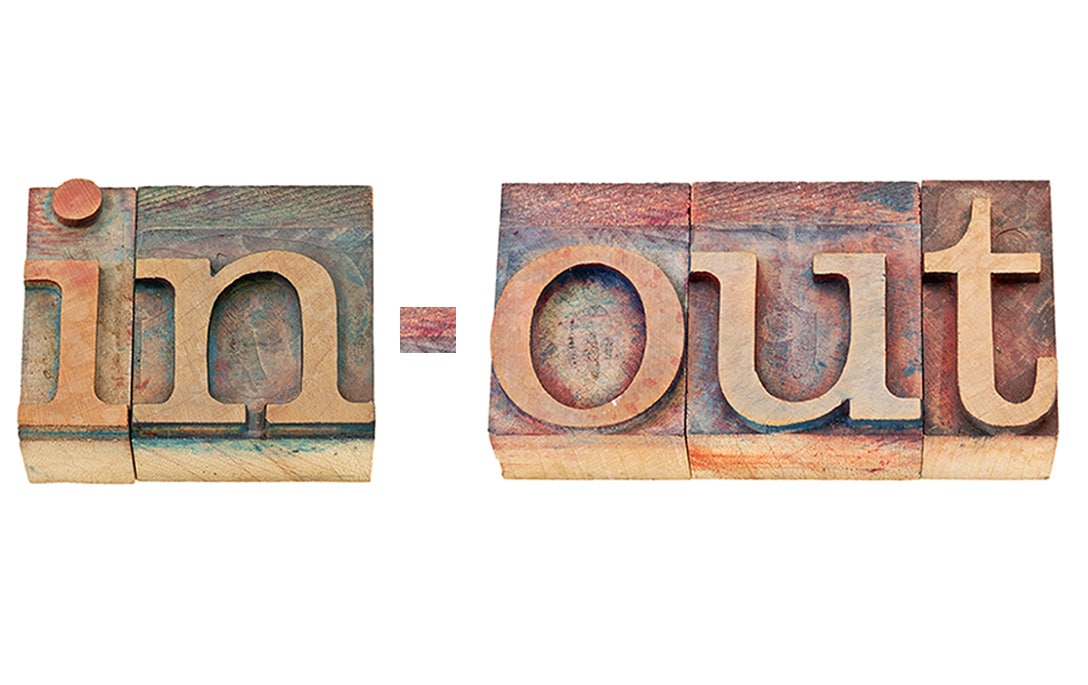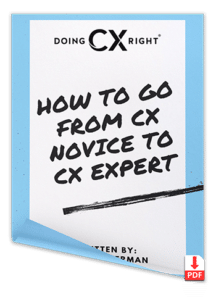Today, we’re pleased to share a guest post by Annette Franz, CCXP of CX Journey. This article originally appeared on her site on August 11, 2015.
In the world of customer experience, what’s the difference between outside-in and inside-out?
Inside-out thinking means your focus is on processes, systems, tools, and products that are designed and implemented based on internal thinking and intuition.
The customer’s needs, jobs, and perspectives do not play a part in this type of thinking; they aren’t taken into consideration. You make decisions because you think it’s what’s best for the business – not for customers. Or you think you know what’s best for customers.
On the other hand, outside-in thinking means that you look at your business from the customer’s perspective and subsequently design processes, tools, and products and make decisions based on what’s best for the customer and what meets the customer’s needs. You make decisions because you know it’s what’s best for your customers. Why? Because you listen to them, and you understand them and the jobs they are trying to do.
It might be inside-out thinking when there’s a conscious decision to make process, policy, people, systems, or other changes that:
- Don’t improve the customer experience at the same time
- Are about maximizing shareholder returns, not about benefits for the customer
- Improve internal efficiencies but to the detriment of customer interactions
- Are cost-cutting measures that also negatively impact the customer experience
- Might be the wrong process, policy, people, or systems to change
By contrast, outside-in thinking flips each of those points on its head and looks like this.
There’s a conscious decision to make process, policy, people, systems, or other changes that:
- Improve the customer experience at the same time
- Are about maximizing benefits for the customer
- Improve internal efficiencies known to be pain points when executing customer interactions
- Are cost-cutting measures that significantly improve the customer experience
- Are the right process, policy, people, or systems because you’ve listened to customer feedback and know how customers are affected
It’s clear that outside-in thinking is the way to go.
It leads to a number of things, none of which you’ll get by making decisions that are not based on what’s best for your customers…
- increased satisfaction
- reduced complaints
- increased referrals
- improved ease of doing business
- increased repeat purchases
- fewer lost customers
These then translate to reduced costs and increased revenue for the business.
How can we ensure that we’re operating in an outside-in manner?
Here are some tips:
- Understand customers and what they are trying to do
- Use that understanding to develop products for the customer, products that solve their problems and help them do what they are trying to do
- Listen to customers at all key touchpoints
- Close the loop with customers on their feedback
- Act on what you hear
- Share the feedback and ensure it’s used throughout the organization to make decisions and to design the best experience for your customers
- Do right by the customer; ask “Is this decision what’s best for the customer?”
- Reduce customer effort rather than making the experience convoluted and confusing
- Save a seat in the room (a la Jeff Bezos’ empty chair) for the customer/customer’s voice
- Map customer journeys and ensure all employees – frontline and back office – have a clear line of sight to how they impact the customer experience. (Learn more about Journey Mapping)
- Talk about customers and what they are saying
The customer and his voice need to be incorporated into all decisions, design, and development. Weave the customer throughout your organization’s DNA and watch what happens.
When you’re trying to make an important decision, and you’re sort of divided on the issue, ask yourself: If the customer were here, what would she say? -Dharmesh Shah, CTO of Hubspot
Sign Up for our newsletter to continue learning how to increase your skills and transform your organization! When you register now, you will get free access to our whitepaper on how to go from CX Novice to CX Expert. Follow us on Twitter for daily updates too.


